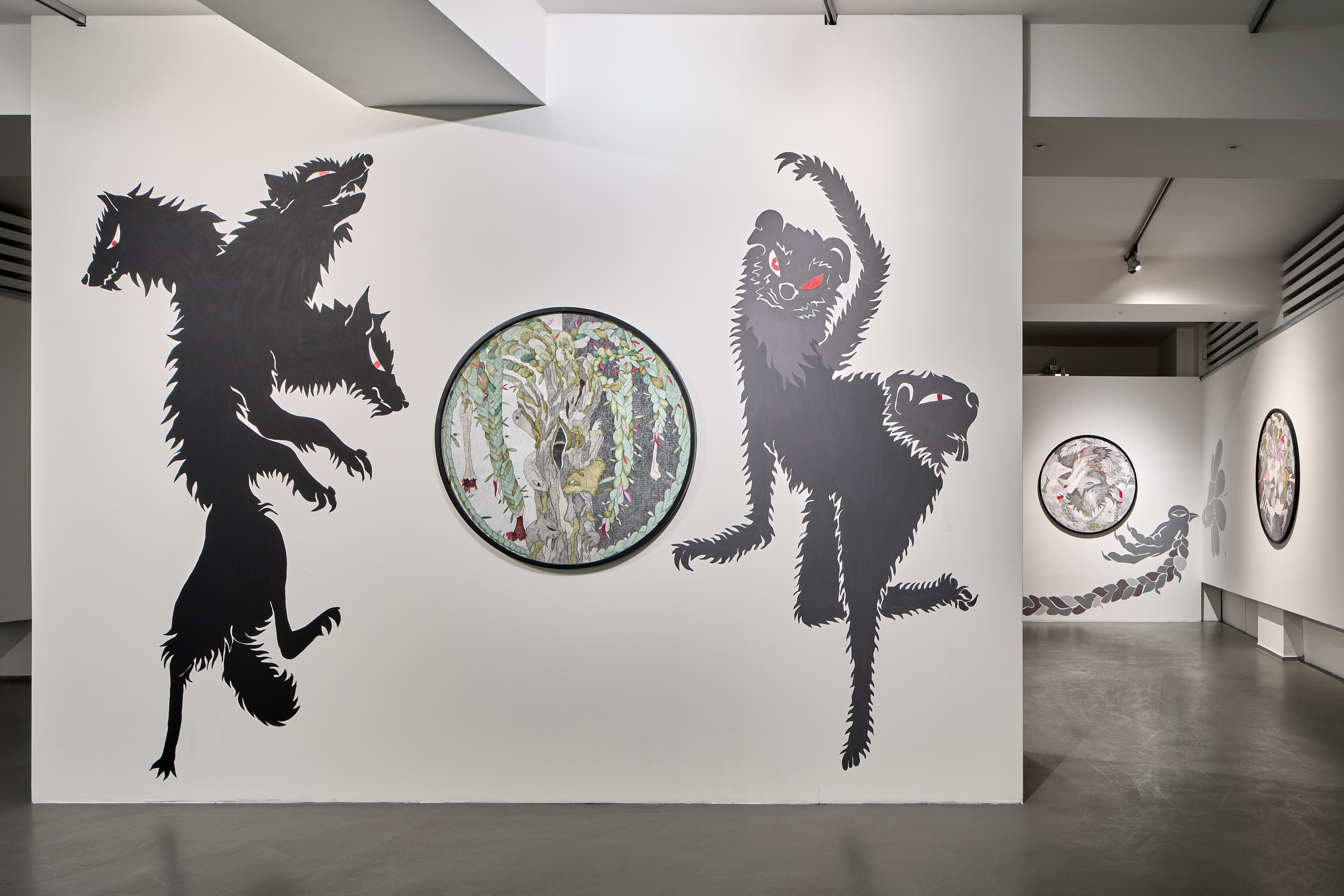
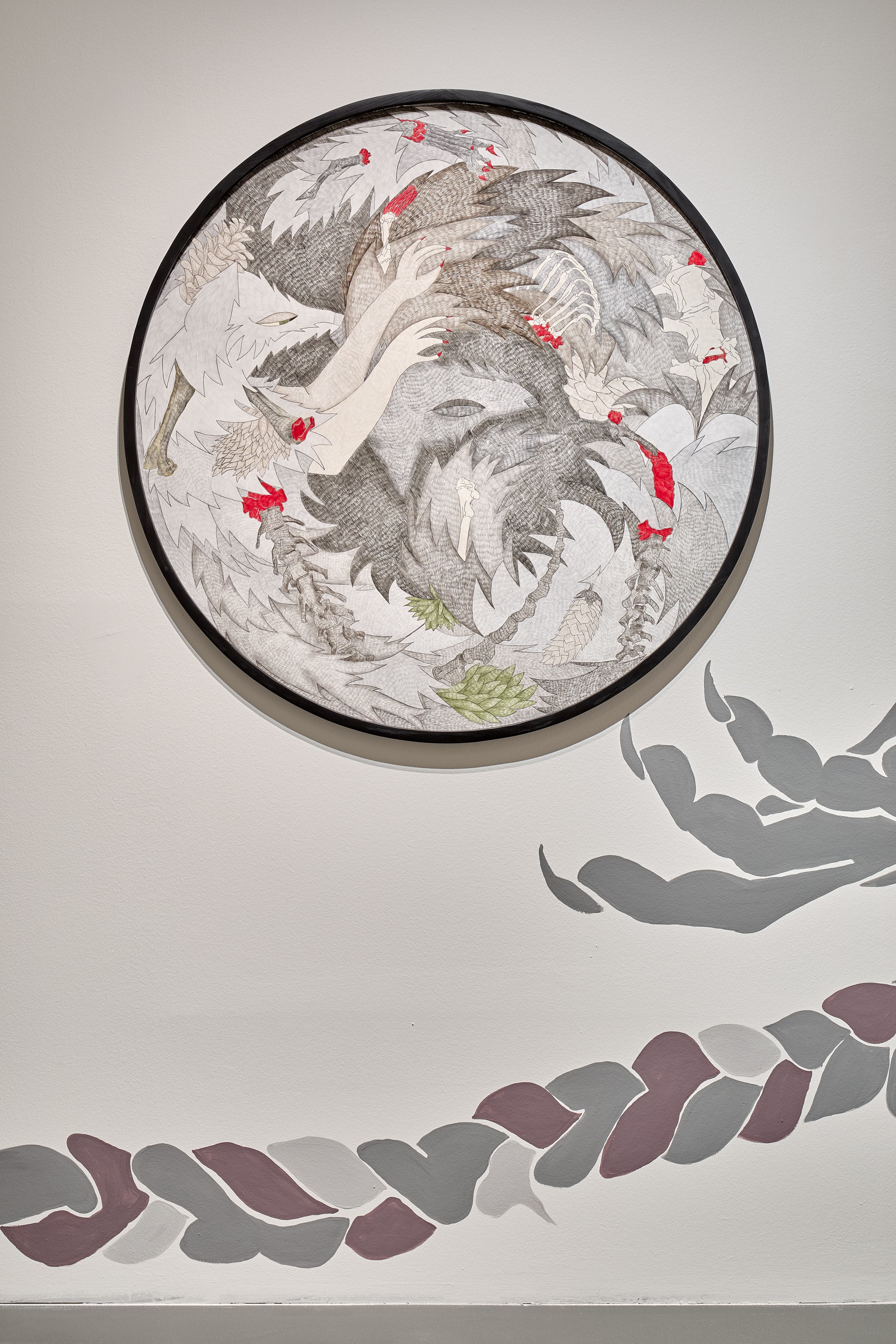
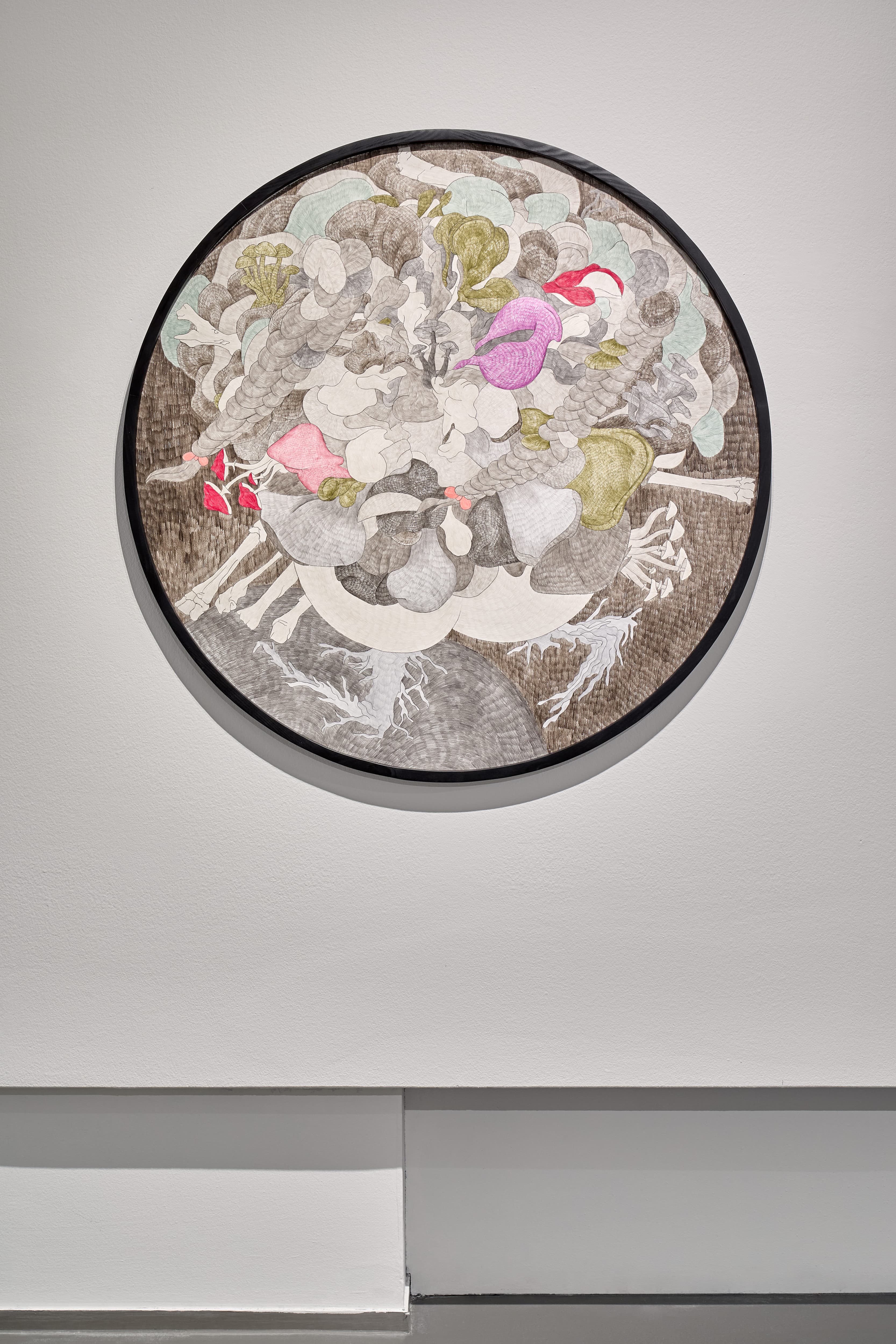
The exhibition Divas is part of a multimedia trilogy aimed — rather unusually in contemporary art – primarily at teenagers. Its other parts are the film Orla (Female Eagle) and the author’s book The Dragon and the Fish. Each of the parts take place on a different time plane. The Orla film whose first part is also included in the exhibition, corresponds to that part of the book’s plotline between the prologue and its main plot. The timeline of the exhibition, consisting of an elaborate series of drawings, prints, and murals, unfolds in a process of artistic transformations, unrestricted in terms of time,
where a new world of myths and symbols is formed by the embodiment of different truths.
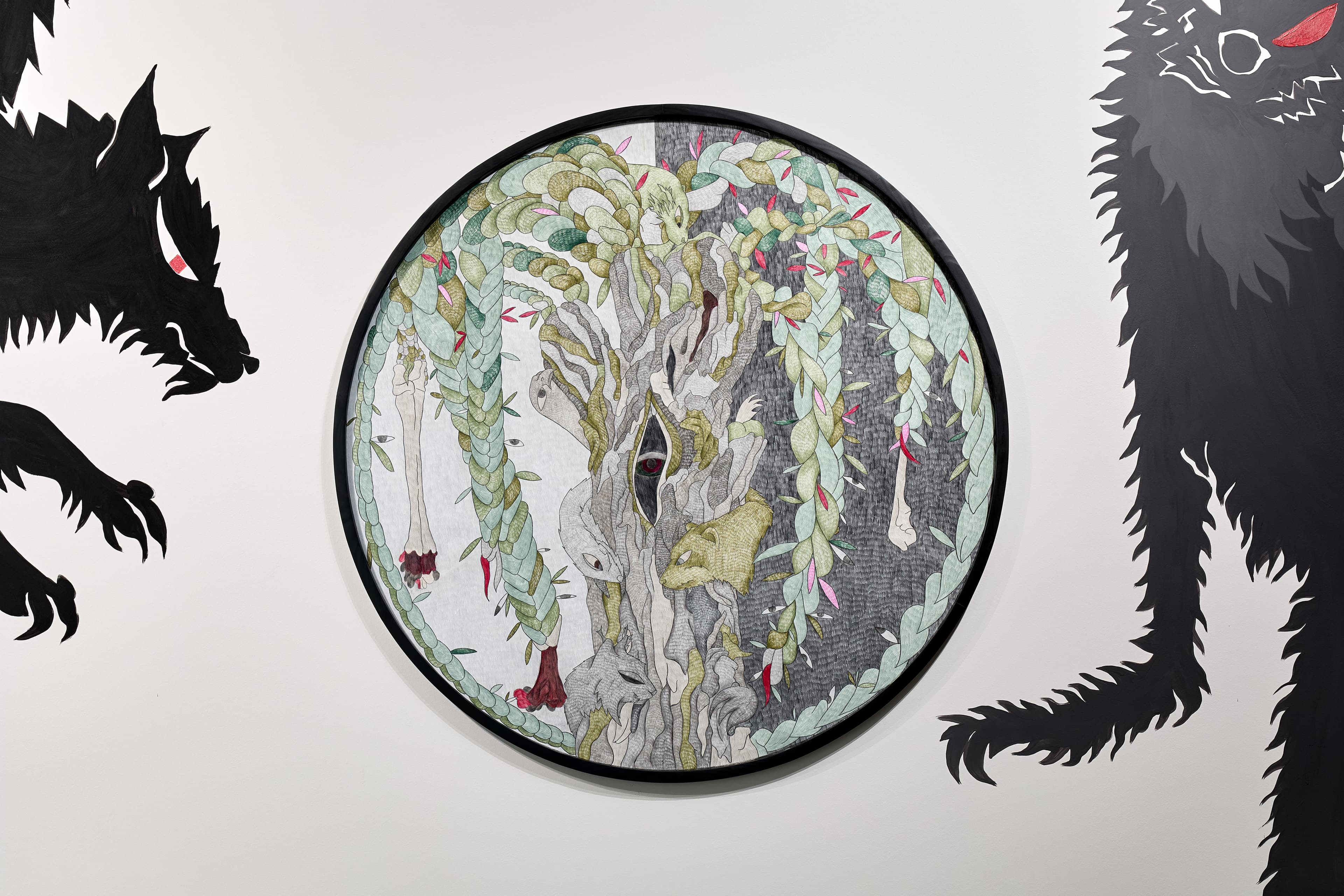
In the subjective perspectives of Marie Lukáčová’s protagonists, the focus of the myth shifts towards corporeality and sensory experience, while classical patterns, balancing
on the fluid interface of innocence and sexuality, are maintained. In the sometimes naive fairy tale stories but also in, on the contrary, very sophisticated fantastic illustrations and animations, the principal motive is a radical re-embracing of the physical – and therefore sexual – aspects of life in the cultural canon, that represents a return to the original even though newly formulated folk wisdom.
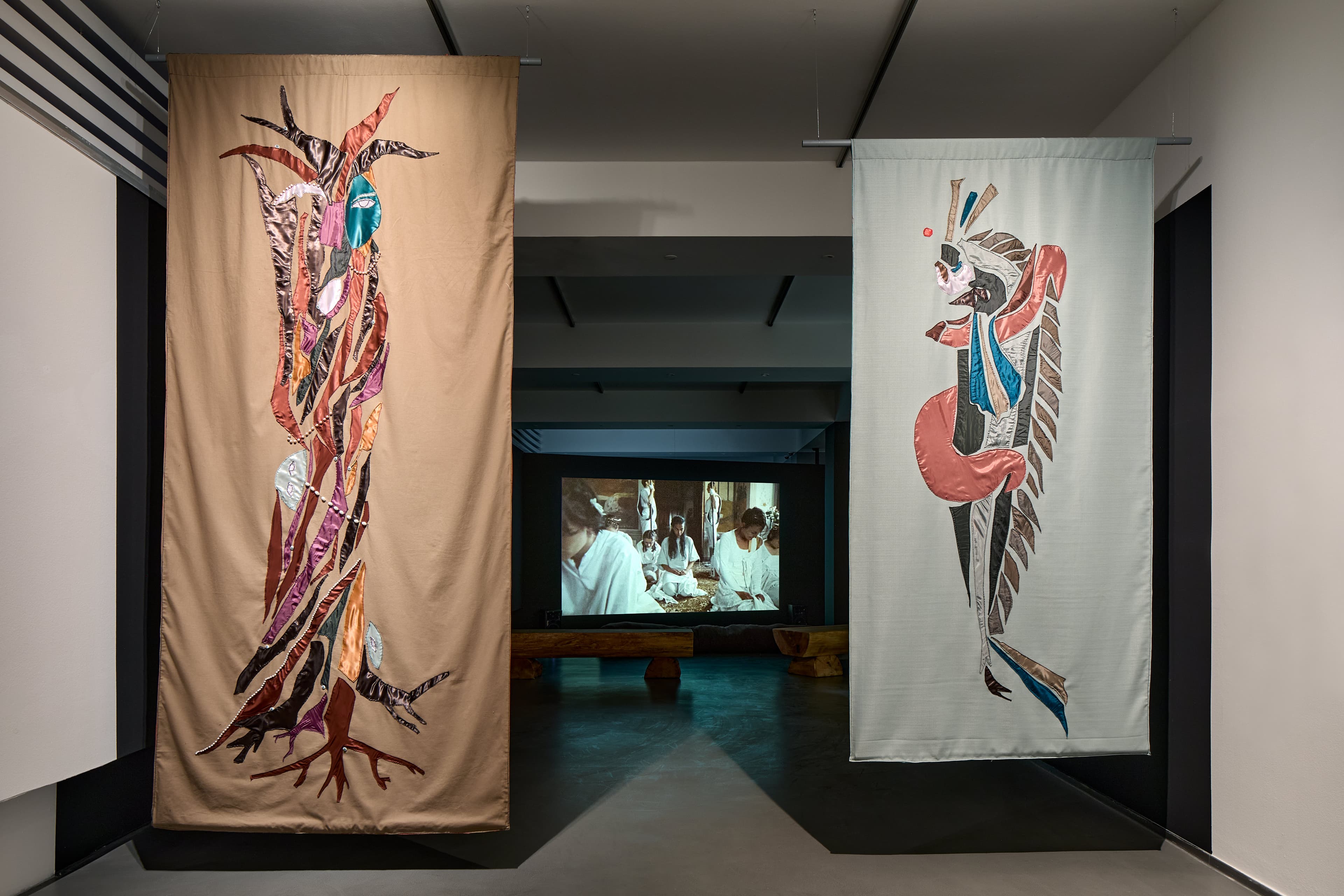
As a certain form of religious text, the myth also satisfies the natural, currently under-satisfied need for the complexity: The Dragon and the Fish story also contains the paradigm of origination, extinction and overcoming extinction. And as in this story, most folk rituals throughout history have been sustained by feminine energy – with
an emphasis on the intimacy of both community and female reciprocity, on physicality in folk rituals, and on emotions associated with motherhood, sexuality, menstruation, childbirth, adolescence, as well as violence and death. And above all on their unconditional connection with nature. Marie Lukáčová’s drawings and animations, in their decorative nature, refer to the phenomenon of traditional works, which have their own specific temporality: for example, the making of bobbin lace in some ways resembles the spinning of mythical forms into individual stories. Both contain creative approaches and rhythms of repetition that adopt the principles of natural cycles and processes.
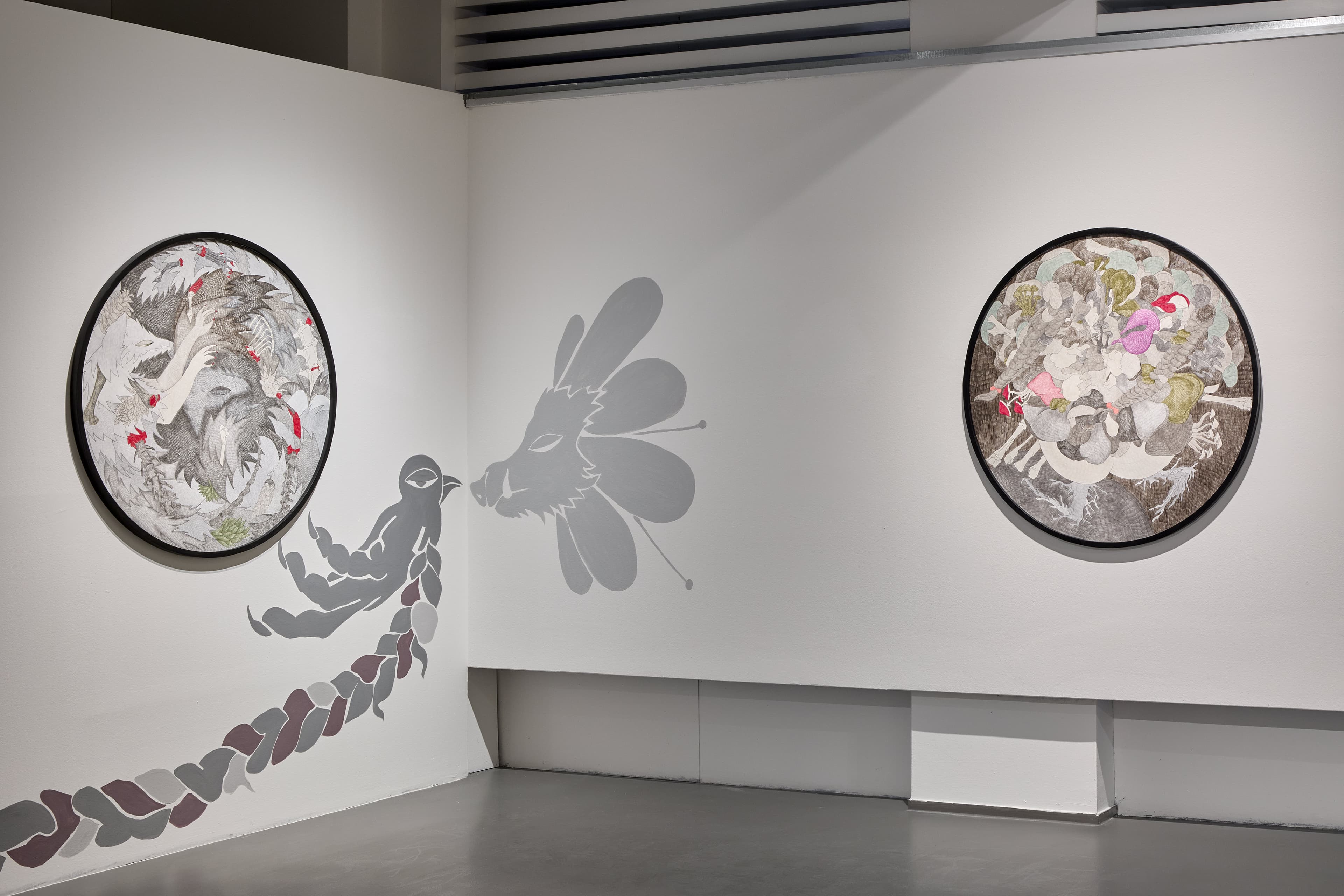
Marie Lukáčová shows that the way to preserve the continuity of life is not to break down traditions, but to appropriate them. To add to them additional, current layers of meaning through new stories. To create new rituals that revive deeply rooted mythological themes that have the ability to release hidden energy. All of this takes on new meaning at a time when society is facing challenges and threats arising from apparently unsustainable social paradigms.
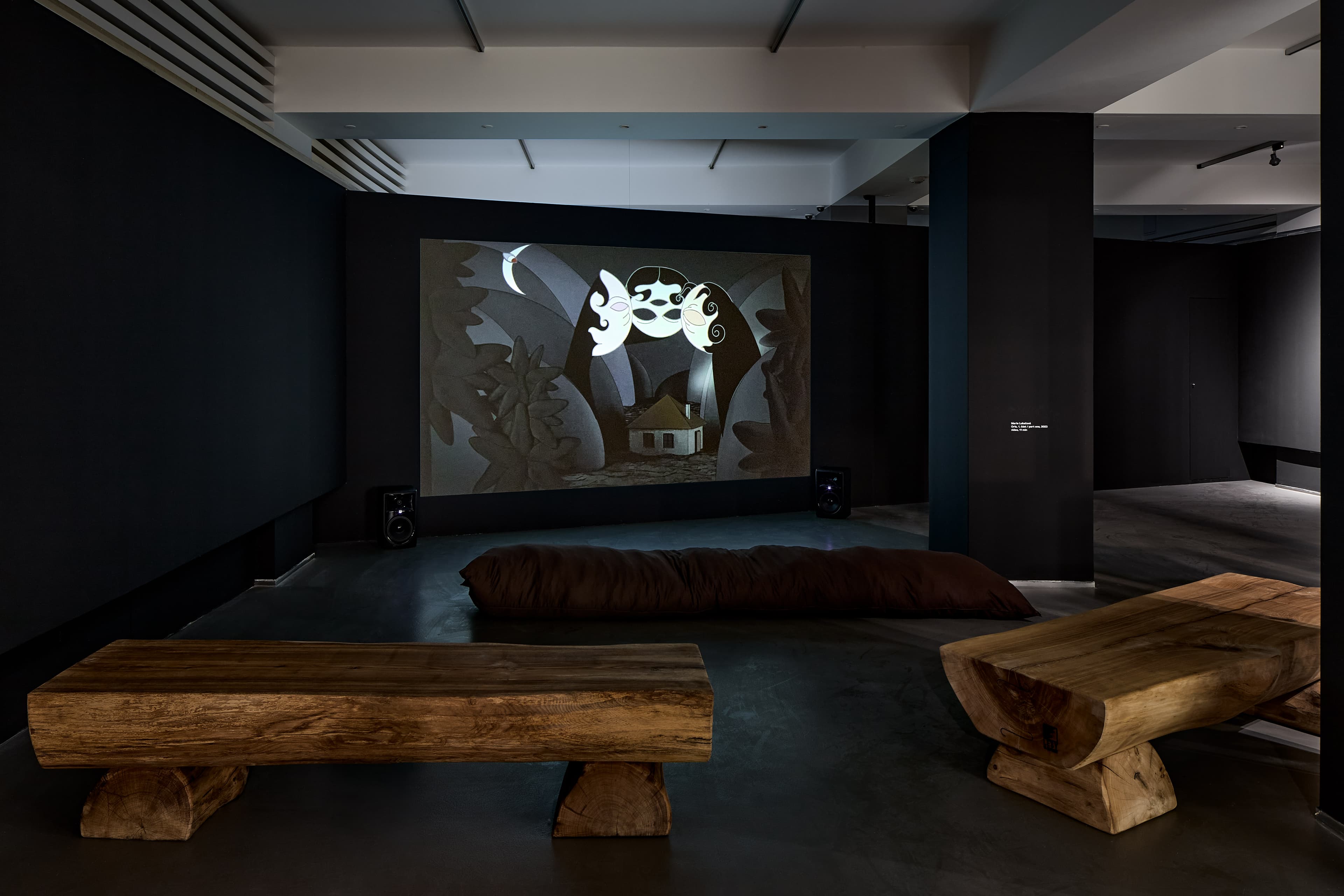
Show curated by Jitka Hlaváčková at GhMP Prague
Photo credits: Jan Kolský